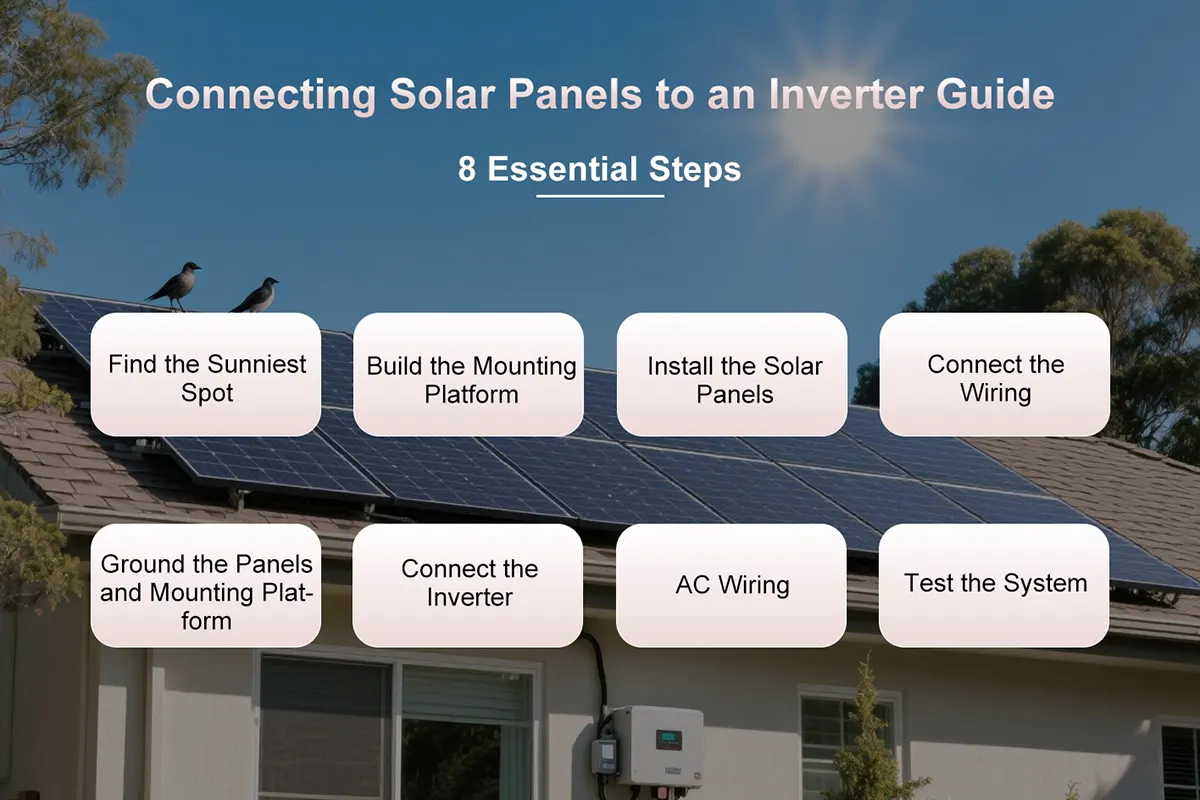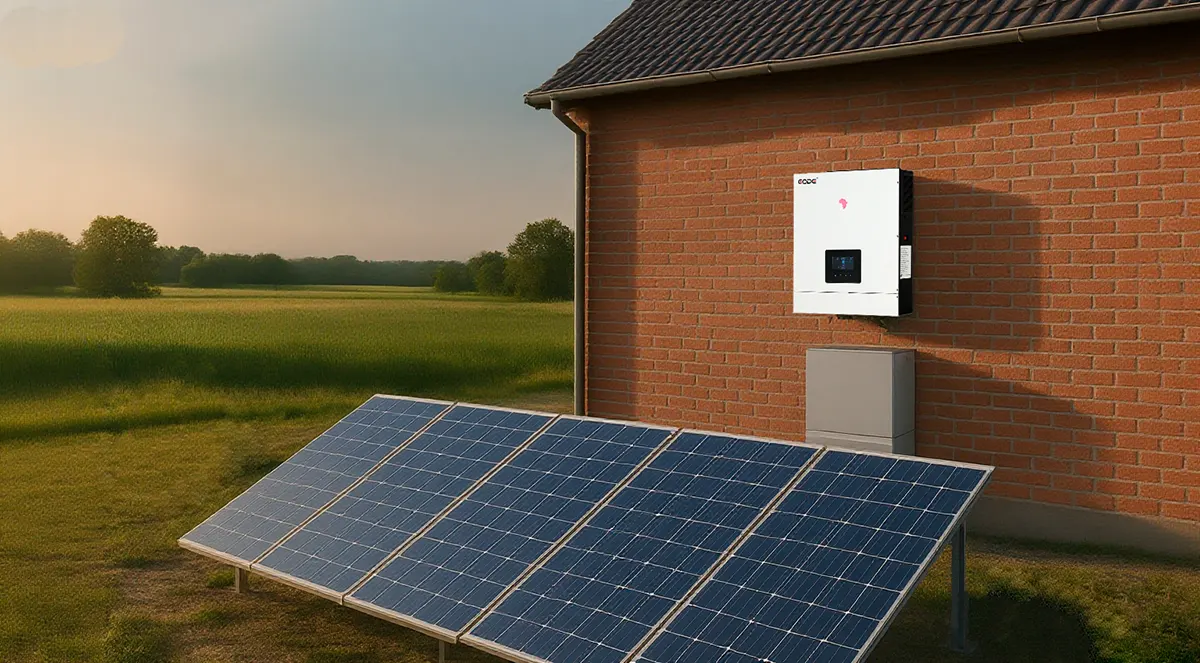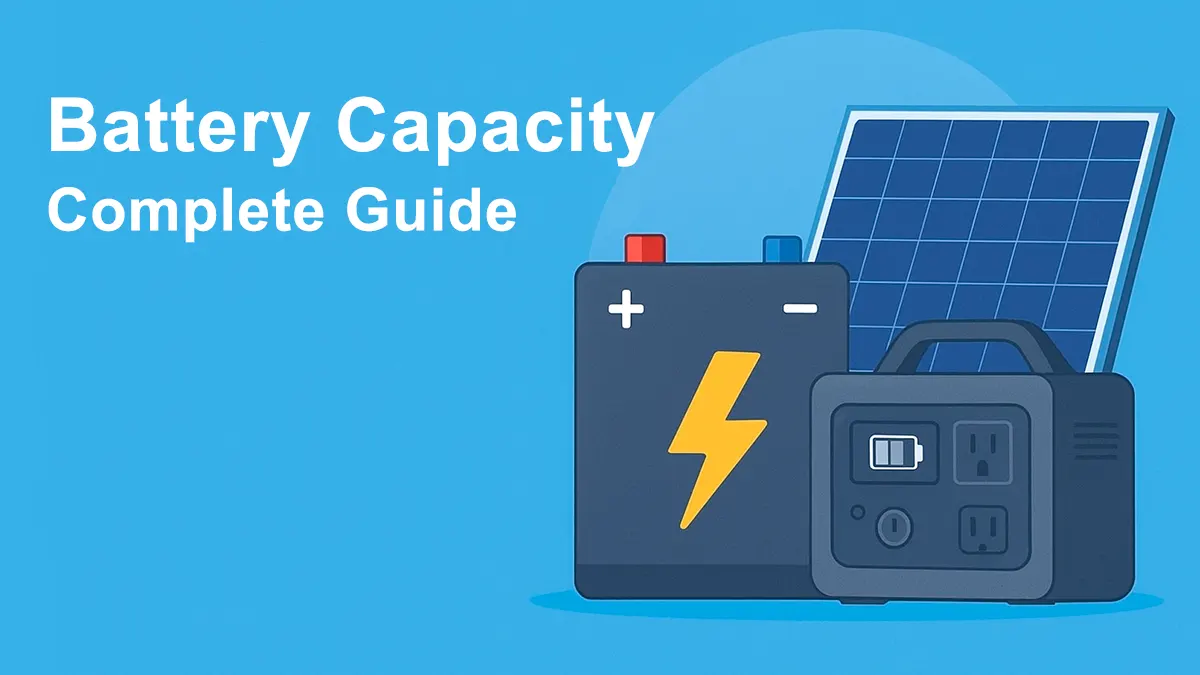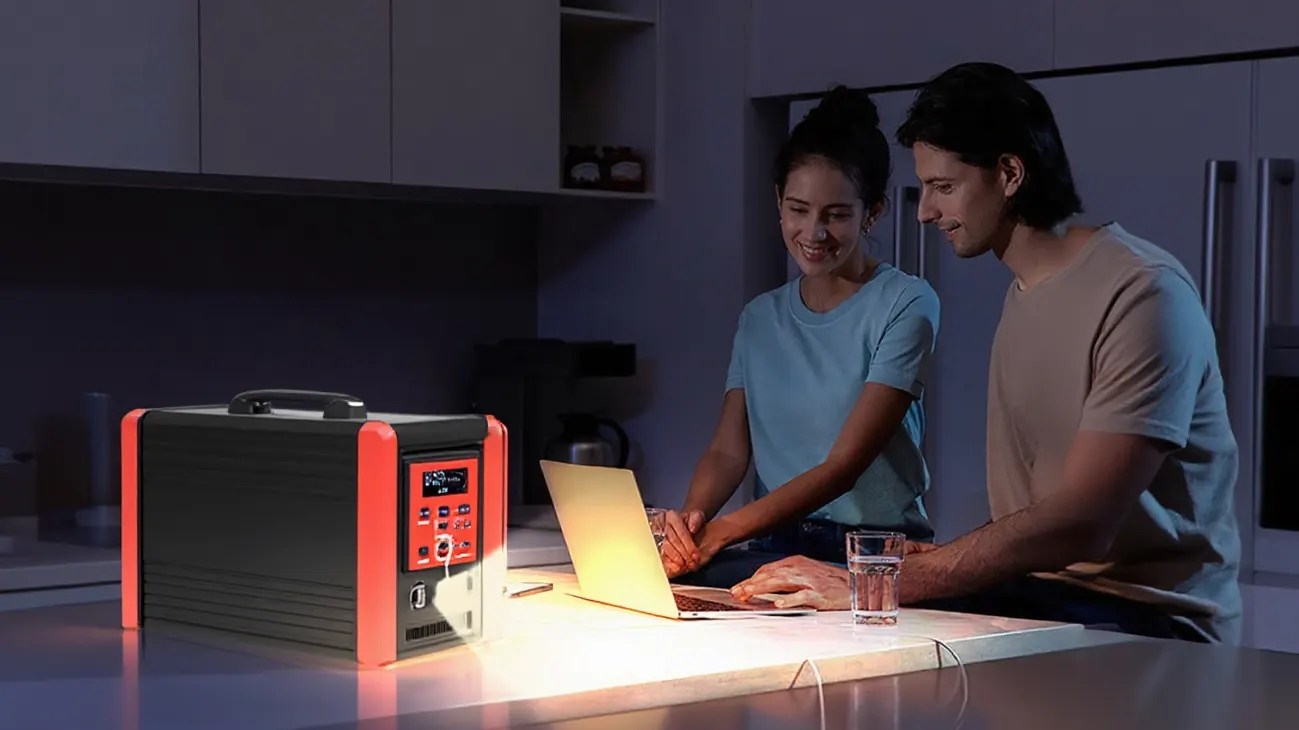August 25, 2025
Wie viel kostet es, Solarmodule selbst zu installieren?
If you are considering replacing traditional electricity with clean energy to reduce dependence on the grid, solar power is an excellent choice. In recent years, the cost of solar systems has dropped significantly, but labor installation fees still account for a large proportion. Therefore, many people ask: if I install solar panels myself (DIY), how much money can I save? Is it worth taking this risk?
This article will provide an in-depth analysis of the costs, advantages, and disadvantages of DIY solar panel installation and answer common questions to help you determine whether DIY is suitable for you.
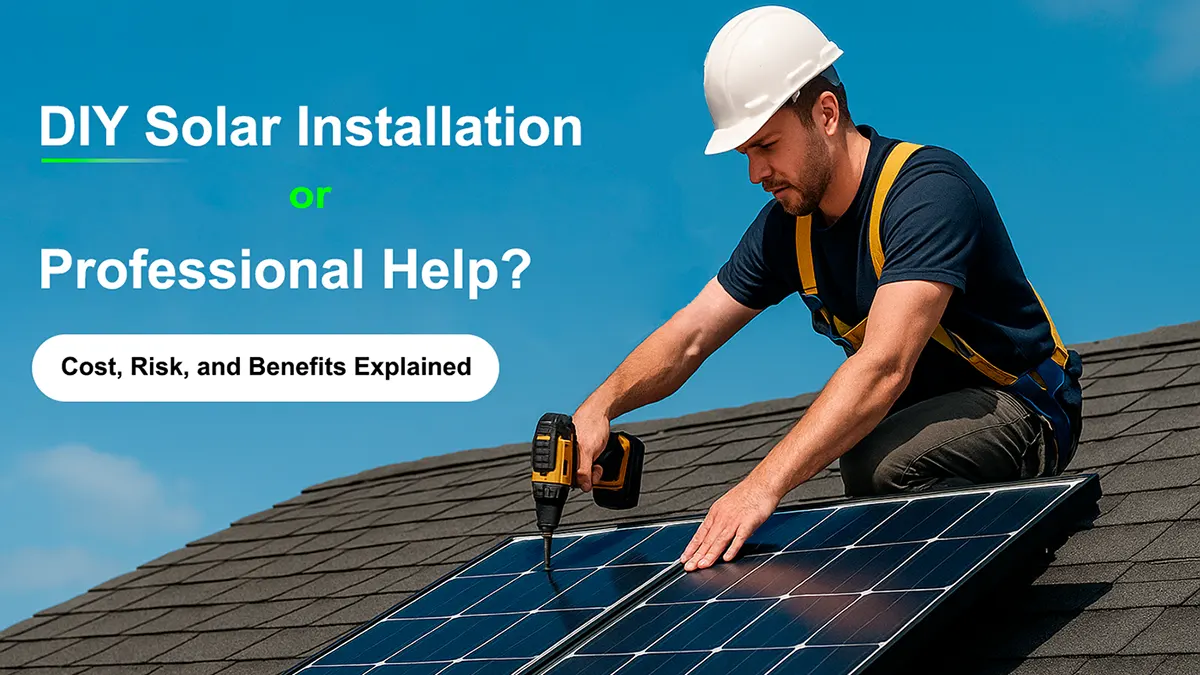
Average Cost of DIY Solar Panel Installation
A grid-tied solar system typically includes solar panels, an inverter, accessories, labor, and services. Here, we temporarily exclude high-cost batteries. Labor and service fees may exceed 50%.
For an ordinary household in the United States:
| Project | Estimated Cost (9kW Grid-Tied System) | Percentage |
| Solar Panels + Inverter | $6,000 | ~33% |
| Cables, Mounting, and Accessories | $2,000 | ~11% |
| Installation Labor & Services | $10,000–12,000 | ~56% |
| Total | $18,000 | 100% |
Installing a 9kW solar grid-tied system costs around $6,000 for panels and inverter, while the remaining $12,000 covers installation labor, cables, and mounting accessories. For a relatively simple installation, this seems quite expensive.
Choosing DIY solar panel installation can significantly reduce system costs. If you have professional knowledge and sufficient time, self-installation might be a good choice, but it comes with certain risks.
Advantages of DIY Solar Panel Installation
Cost Control
The most direct advantage of DIY is saving money. By removing labor and management fees from installation companies, overall savings can reach 30%–50%.
For a 9kW home system, installing yourself may save $5,000–10,000 compared to a full-package solution. For ordinary households, this is a considerable saving, which could be used for other home upgrades, such as storage batteries, heat pumps, or directly offset future electricity bills.
Flexibility
DIY installation means you have complete control over the design. You can adjust the angles and positions of solar panels according to roof orientation, shading, and personal needs, and even allow gradual system expansion, such as starting with 5kW and adding more panels later when funds allow, without being restricted by an installer’s “one-time package.”
Learning and Sense of Accomplishment
Completing any complex project independently is a proud achievement. DIY solar installation is no exception. From planning and design, drilling and fixing, waterproofing the roof, transporting panels, laying cables, configuring inverters, to connecting to the breaker box, every step requires your personal thinking and problem-solving.
Environmental Contribution
DIY installation is not just a personal project; it is an environmental action. By replacing part or all of grid electricity with solar energy, you can reduce a large amount of CO₂ emissions each year.
Maintenance Independence
Building the system yourself means you know its structure thoroughly. When leaves, dust, or inverter issues occur, you can quickly locate and handle them rather than waiting for a company to respond. More importantly, understanding the system logic reduces long-term maintenance costs and downtime caused by waiting for service.
Many manufacturers are simplifying permanent solar installation processes. For example, the GODE ST-M-450W Monocrystalline Solar Panel supports MC4 plug-and-play design and is compatible with most standard mounting systems, greatly reducing installation difficulty and construction time, allowing solar systems to be used sooner, saving electricity, and reducing carbon emissions.
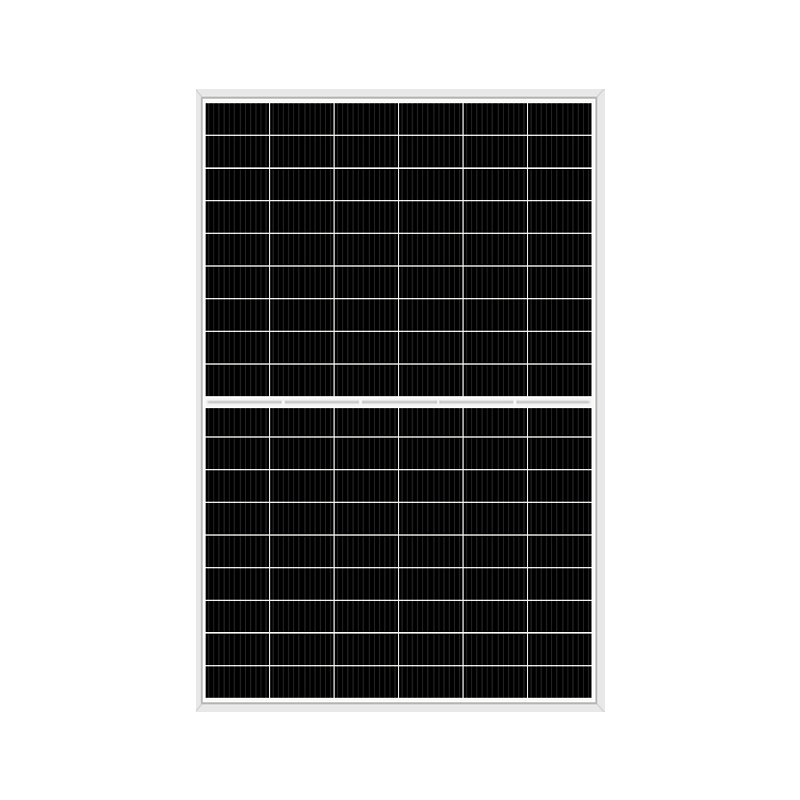
Disadvantages of DIY Solar Panel Installation
Technical Barrier
Solar system installation involves electrical wiring, high-voltage DC, roof structure, safety regulations, and multiple other fields. Lack of professional knowledge may lead to reduced efficiency, roof leaks, or even fire hazards. For example, DC bus voltage often exceeds 400V, with currents over 20A. Loose connections can cause arcing, which is extremely difficult to extinguish. This risk should not be underestimated.
Time Cost
DIY installation is time-consuming, requiring substantial effort from planning, procurement, to installation and commissioning, possibly taking weeks or months. This time cost is very high, sometimes exceeding the savings from labor. Professional teams typically complete a residential system in 1–3 days.
Safety Risks
DIY involves high-voltage circuits and working at heights. Improper operation may lead to electric shock, falls, and other accidents. If you are not fully confident in handling electrical components and rooftop work, hiring professional installers is a safer choice.
Efficiency Limitations
The layout of a photovoltaic system affects power generation efficiency. For example, a chimney shadow may reduce the output of an entire string of panels by over 30%. Professionals use simulation software to optimize layout, while DIY often relies on intuition and simple tools. Short-term savings may be offset by long-term efficiency losses.
Warranty Concerns
Most PV modules and inverters come with 10–25 years warranty, but usually require installation by certified professionals. DIY installation may void warranties, leaving you fully responsible for repairs in case of leaks, inverter failure, or panel damage.
Conclusion
DIY solar panel installation can save money but requires significant time, learning, and carries safety and warranty risks. It may also affect eligibility for subsidies and grid connection.
For DIY enthusiasts with electrical skills, it is a challenging but rewarding option. If you value efficiency, safety, and long-term guarantees, hiring professional installers remains the safer choice.
Regardless of whether you choose DIY or professional installation, transitioning to solar power is a win for both the environment and your finances.
If you want to explore solutions suitable for your home, check out GODE’s residential PV system.
DIY Solar Panel Installation FAQs
share

